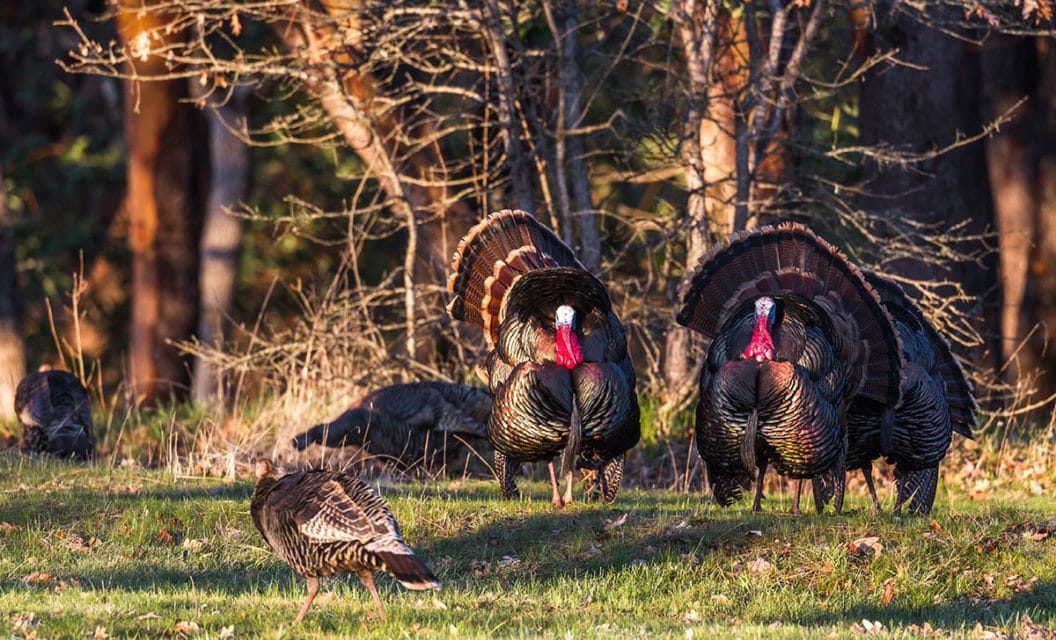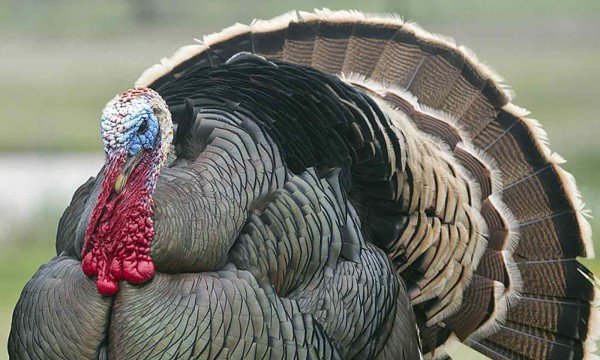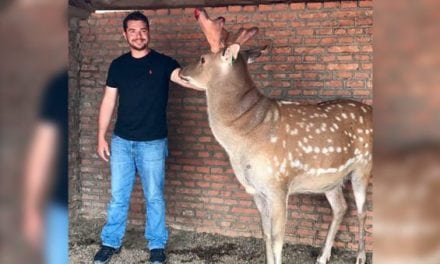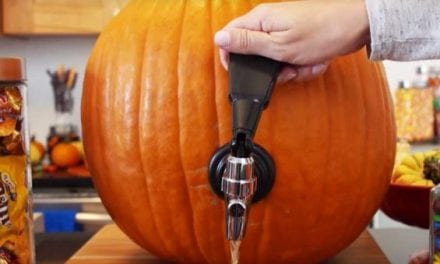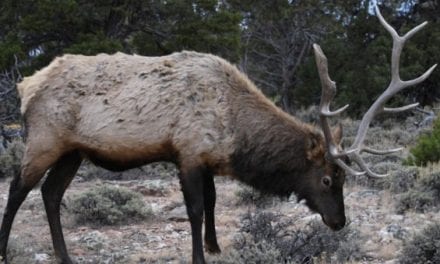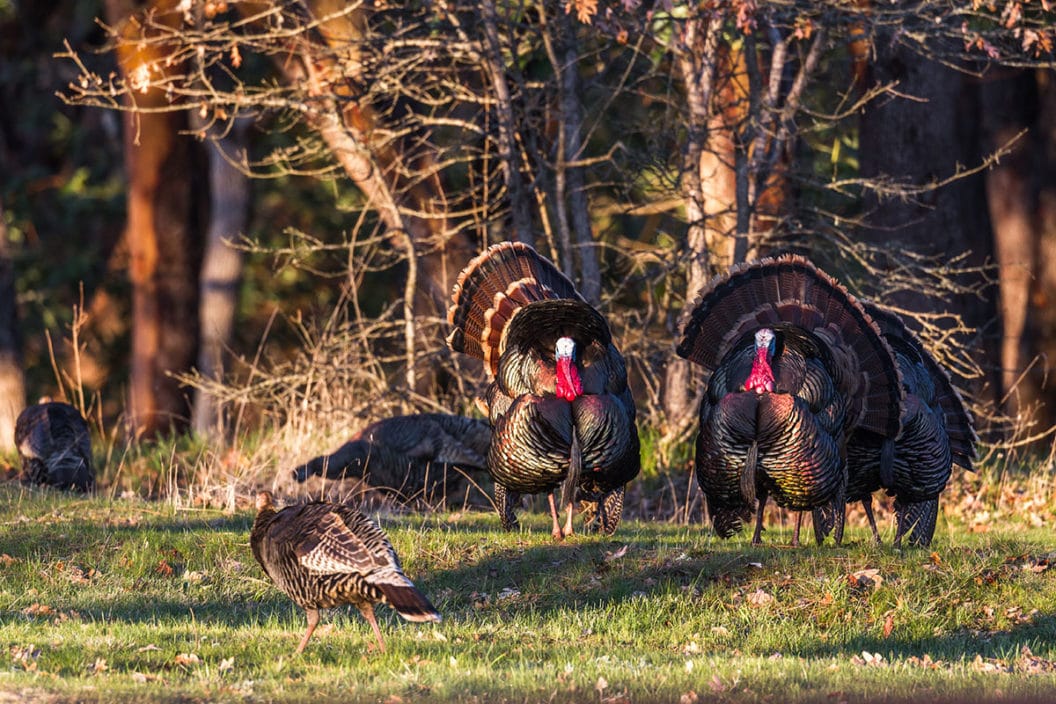
Before you head out on your next turkey hunt, learn the different sounds turkeys make and what they all mean.
Turkey hunting is very exciting in that we get to try our best to fool a smart old tom by imitating another turkey. There are tricks to the trade though, and it’s much more than dragging a pencil-looking thing across some slate and hoping for the best.
Turkeys make a range of sounds and each vocalization has a meaning behind it. Like turkeys, humans have sounds that we use in particular situations.
In life, and in turkey hunting, if we were to call turkeys with the wrong vocalization at the wrong time, it wouldn’t fit right with anyone in the area. You wouldn’t want to laugh during a funeral or sound angry when praising a child, right? The same goes for turkey hunting.
This is why it is important you understand wild turkey sounds and what they all mean.
Below are the most common sounds female and male turkeys make during and outside of the mating season. Hopefully you hear these and distinguish their intentions during turkey hunting season. You’ll see more success if you do.
1. Yelp
The yelp is a basic turkey sound, and probably the most heard sound from turkeys. Both male and female turkeys yelp. It sounds very similar to its name.
When a turkey yelps, it is in a series of notes, mostly in a sequence three to eight that shares location with other birds. It’s basically the “Hey everyone, I’m over here!” call.
It’s also a good call for when a hen is on the look for a tom, so learning this call as a hunter is vital. A tree yelp is a yelp often used by a roosted hen before she flies down as a way to let other turkeys know she is awake and looking for the first tom that’s ready for action.
A tree call like this is almost nearly just a softer, plain yelp, but can be key to getting a gobbler off the roost to draw him in to your setup before he has a chance to move to another hen.
2. Cluck
The cluck is a call that is used by all adult birds, both gobblers and hens. When a gobbler is making a plain cluck, it’s usually an indication that “Hey there, I’m just here.” It will come in a slower cadence often times with other turkey sounds like a yelp, or just by itself.
When a hen uses single note clucks, it holds a similar meaning as a tom and is in conjunction with feeding or just moving around the area. Often times soft clucking can be confused with a putt (it’s not a loud call and sometimes hard to distinguish), and understanding the difference can mean a tagged turkey or coming home empty-handed.
3. Putt
Similar to a cluck, but a totally different meaning. Often times you will hear this in a fading sequence because it is usually when a turkey is running away from you telling their flock mates, “Everyone run! Get out of here, something dangerous is near!”
Ever hear a deer blow at you in the woods? This is a very similar concept.
The putt is a slightly shorter sound than a cluck and often times in an excited cadence, especially when on high alert. If you take your lips and press them together and say “putt, putt, putt” you have nearly mastered the call.
4. Cutting
Cutting is a series of loud and fast clucks mixed in with some yelps. It is used when a hen is fired up. If a gobbler has gone silent, many times using this call will work to get a response. Be careful not to overdo it, however, as sometimes a silent tom may just be around the corner and cutting may just be too much for him depending on the scenario.
My father used to describe cutting to me as a truck trying to start with a plugged fuel line. As the engine turns over, it cuts in and out in a “ba-boom, ba-boom, boom, boom, ba-boom.” Cutting is very similar, but be careful to know the difference between cutting and putting because again, very similar sounding, two totally different meanings.
5. Purr
I like to think of the purr as someone who is humming a song or whistling as they go about their business. Usually it means the bird has a feeling of contentment. You will mostly hear it from feeding birds who want to maintain contact with one another.
If you hunt enough or watch enough turkey hunts, you may also hear a tom purr as a sign of aggression. This may occur while one gobbler is invading another gobblers area or as one moves in to try to force out another gobbler.
If you have a good enough setup, you may be lucky enough to catch a gobbler purring his way in to attack your jake or tom decoy, which makes for a great and exciting hunt.
6. Cackle
Often times called the “Fly-Down Cackle,” this call is usually heard as a turkey leaves the roost and “flies-down” to the ground. Most turkeys will start with their tree yelp indicating their location. Then, when they are ready to leave the roost, they cackle. A cackle starts as quick clucks and cuts, and as it lands on the ground, the cadence slows down, often moving into yelps.
Many times this is accompanied with the loud sound of the flapping of their wings as they fly down from their roost. If you are in the woods and hear the cackle, it is a good sign you got up early enough for the morning hunt.
7. Kee-kee and Kee-kee run
When I was a Jake member at 12 years old with the NWTF and entered into turkey calling competitions, this was my favorite call. Now granted, I never won a competition, but I’ll always remember being up on stage and holding true to my grandmother’s nickname for me: “Little Turkey.”
The kee-kee run is pretty much just that: a little turkey. Hunters often use this in the fall when a flock of turkeys has separated and a young turkey is trying to yelp back to its mother. It’s an indication that the young poult is lost and wants to be found.
The sound is a series of attempted yelps. High pitched “pee-pee-pee-pee-pee” sounds is the only way I can think to describe it. As a turkey gets an actual yelp out, the call becomes known as the kee-kee run, starting with the high-pitched sound and ending with a quick series of loud yelps that sounds something like “pee-pee-pee-pee-yelp-yelp”.
A good hunting strategy for the fall hunting season is to scare off and separate a flock of turkeys, set up and use the kee-kee run to imitate a lost bird to try to pull in the more mature hens and toms.
8. Gobble
Save the best for last. This is the sound you want to hear in the woods; it’s obviously one of the principal vocalizations of the male turkey. This sound is an indication that a tom, or jake, is excited and wants a hen. It is used to attract hens but also to deter other toms and jakes.
Jakes sometimes can fool you into thinking they are a tom when they gobble, however sometimes will yelp in response to your calling until they actually can gobble. If you haven’t heard a turkey gobble in the woods yet, prepare to hear a sound that recruits and retains more and more turkey hunters every year.
No matter if you are calling, hunting or both, understanding the sounds turkeys make is vital in having a successful hunt. Take the time to listen to the sounds, distinguish their differences, and understand what each sound means.
Finally, when in doubt, less is more. You can’t scare a turkey away by calling too little. One of the biggest mistakes turkey hunters make is getting to overzealous with their call and tipping that big gobbler off. Think like a hen and play hard to get.
Similarly, if you find yourself in the field unsure of which of these sounds you’re hearing, resort back to your fundamentals and keep it simple.
If you’re going to be calling this turkey hunting season, be sure to practice as much as possible, and remember you wouldn’t want anyone laughing at your funeral.
READ MORE: WHY FOOD PLOTS ARE SO IMPORTANT FOR GROWING AND MANAGING DEER
The post How to Understand Every Sound a Turkey Makes appeared first on Wide Open Spaces.

